Norfolk Island
Wednesday, 1 March 2023It’s a 35 square km patch of Pacific Island, green and lush and about 1600km north-east of Sydney or 1100km north-west of Auckland. The population is a bit over 2000, many of them claiming descent from the Bounty Mutineers who, after kicking William Bligh off HMS Bounty, sailed away to exile on remote Pitcairn Island. I visited Pitcairn, between Easter Island and Tahiti, in 1998.
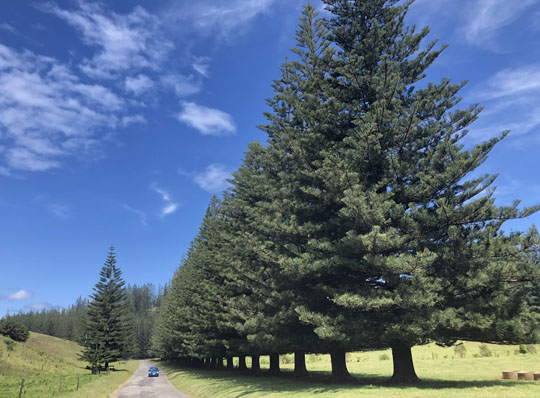 ▲ Norfolk pines are definitely the symbol of the island, they grow everywhere, wild and planted and also appear on the Norfolk Island flag which could easily be confused with the flag of Lebanon.
▲ Norfolk pines are definitely the symbol of the island, they grow everywhere, wild and planted and also appear on the Norfolk Island flag which could easily be confused with the flag of Lebanon.
Captain Cook, on his second great Pacific voyage, gets the credit for the European discovery of the island in 1774. Although there undoubtedly had been Polynesian settlements on the island it was uninhabited when Cook dropped in. In 1788 it was established as a convict penal colony, soon after the First Fleet arrived in Sydney, but in 1814 it was abandoned for 11 years and then re-established as a penal colony, a place reserved for ‘the worst description of convicts.’
This second prison spell ended in 1855, but only a year later the island was settled for a third time, this time with settlers from Pitcairn Island because of fears that the island was becoming over-populated although in fact Pitcairn, 47 square km, is somewhat larger than Norfolk Island. Some of the Pitcairn arrivals soon decided that they didn’t like their new home and returned to Pitcairn where, today, the problem is under-population rather than over. The Pitcairn population hovers between 40 and 50, but getting to Pitcairn (an occasional boat) is far more difficult than Norfolk (half a dozen flights a week).
Australia became independent in 1901, but Norfolk Island continued to be administered from the UK until it was handed over to Australia in 1914. Today it’s an Australian ‘external territory,’ a curious definition which means it’s neither part of Australia or an independent nation, perhaps it’s a bit like Puerto Rico is to the USA?
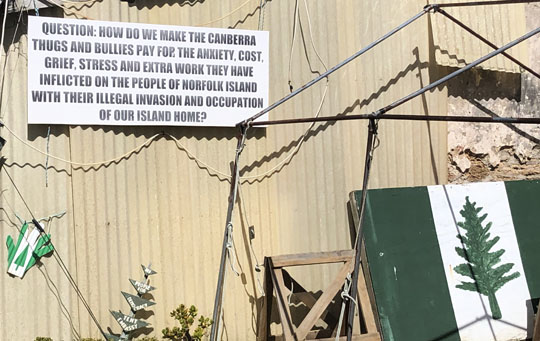 ▲ There’s certainly some friction between the Norfolk Islanders and mainland Australia and visitors will see protest signs and proclamations all over the island. There are even suggestions that perhaps King Charles should come back and take over where Queen Victoria left off.
▲ There’s certainly some friction between the Norfolk Islanders and mainland Australia and visitors will see protest signs and proclamations all over the island. There are even suggestions that perhaps King Charles should come back and take over where Queen Victoria left off.
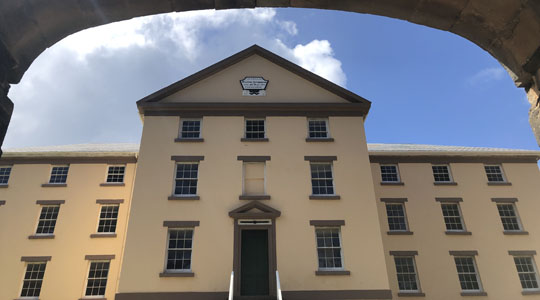 ▲ The Commissariat Building is one of the very solid reminders of the colonial and penal colony period on the island. It’s in Kingston the UNESCO World Heritage area on the waterfront.
▲ The Commissariat Building is one of the very solid reminders of the colonial and penal colony period on the island. It’s in Kingston the UNESCO World Heritage area on the waterfront.
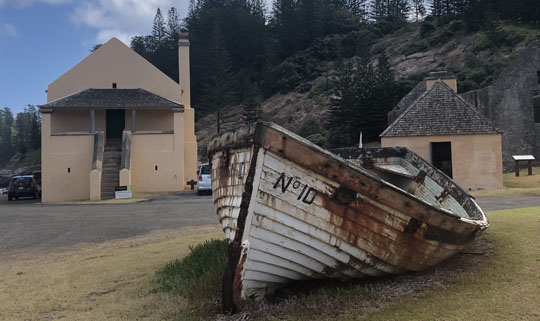 ▲ Kingston features decaying lighters, used to ferry cargo from ship to shore since the island has no harbour deep enough for large ships to come in to dock.
▲ Kingston features decaying lighters, used to ferry cargo from ship to shore since the island has no harbour deep enough for large ships to come in to dock.
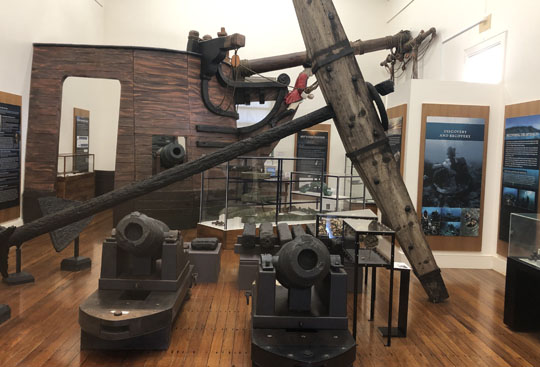 ▲ The island is well endowed with museums including the HMS Sirius Museum in Kingston which tells the story of the disastrous shipwreck of the Sirius, the flagship of the First Fleet. It’s wreck on the reef off Kingston was disastrous not only for the Norfolk Island colony, but also for the main colony in Sydney.
▲ The island is well endowed with museums including the HMS Sirius Museum in Kingston which tells the story of the disastrous shipwreck of the Sirius, the flagship of the First Fleet. It’s wreck on the reef off Kingston was disastrous not only for the Norfolk Island colony, but also for the main colony in Sydney.
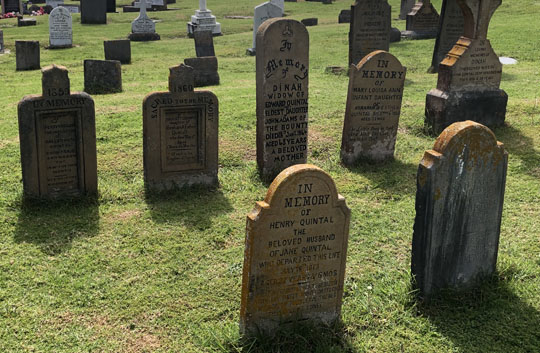 ▲ The Cemetery Reserve in Kingston has a real story to tell from the earliest colonial graves to the most recent ones. Like everything else on Norfolk Island it’s amazingly neat, tidy and well kept.
▲ The Cemetery Reserve in Kingston has a real story to tell from the earliest colonial graves to the most recent ones. Like everything else on Norfolk Island it’s amazingly neat, tidy and well kept.
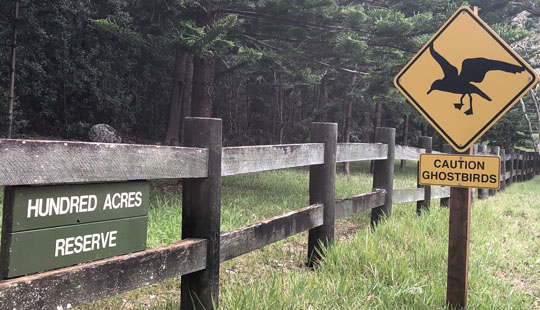
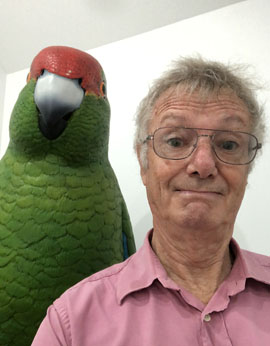 ▲ Bird watchers will find interesting feathered friends to study including the ghostbirds – wedge-tailed shearwaters – in 100 Acre Wood.
▲ Bird watchers will find interesting feathered friends to study including the ghostbirds – wedge-tailed shearwaters – in 100 Acre Wood.
◄ I may have caught a glimpse of a solitary example of Norfolk Island’s iconic green parrots, but this large specimen in the Botanic Gardens information centre was hard to miss.
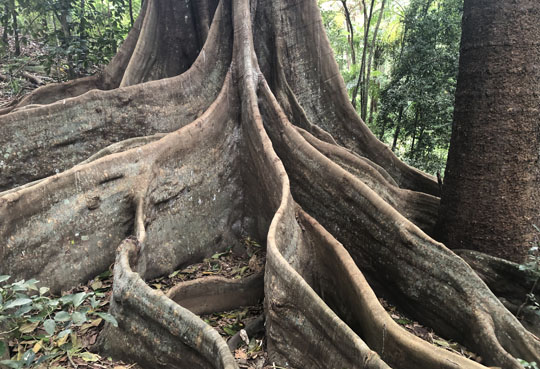 ▲ As a change from all those Norfolk pines there are some imposing Moreton Bay figs in the 100 Acre Reserve. The circuit walk in the reserve takes you down to a fine headland lookout and there are also some excellent walks from the Captain Cook Monument in the National Park.
▲ As a change from all those Norfolk pines there are some imposing Moreton Bay figs in the 100 Acre Reserve. The circuit walk in the reserve takes you down to a fine headland lookout and there are also some excellent walks from the Captain Cook Monument in the National Park.
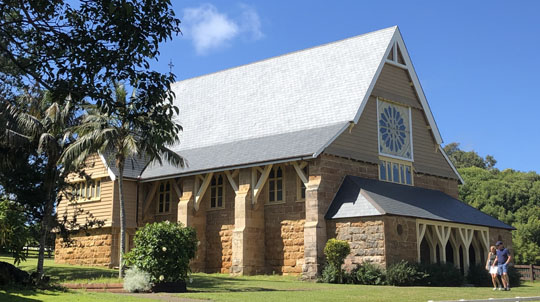
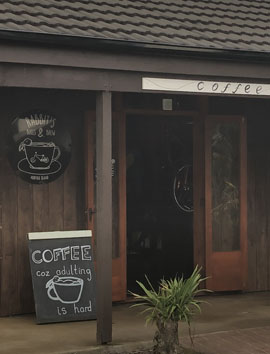 ▲ St Barnabas Chapel is without doubt the finest church on the island with a particularly notable collection of stained glass windows.
▲ St Barnabas Chapel is without doubt the finest church on the island with a particularly notable collection of stained glass windows.
◄ And if you want a good cup of coffee or to get your bicycle looked after then head to Rabbit’s Bikes & Brew in Burnt Pine. In the centre of the island and only a km or so from the airport terminal Burnt Pine has most of the island’s shops as well as cafes, restaurants, hotels, the RSL Club and the Bowling Club.
The islanders may complain about their government relationship with Australian, but I found the curious ‘external territory’ status to be a damned nuisance when I ‘returned’ to Australia. Arriving from Norfolk Island is treated like an international arrival, except the usually efficient Australian passport Smartgates don’t work for Norfolk Island arrivals. Which means you have to get your passport checked manually, but they fail to put on extra immigration officials to handle Norfolk Island arrivals and as a result it’s far more time consuming to ‘arrive’ in Australia from Norfolk Island than it would have been if you were a real international arrival!






